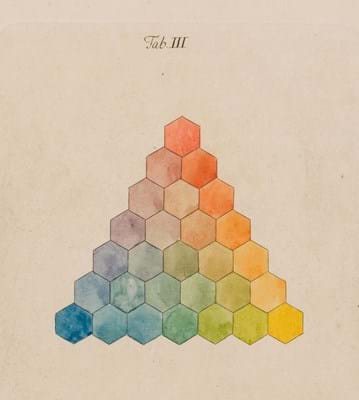Books and works on paper
WHILE a pioneering photographic work sold for a record £75,000 led the Lyon & Turnbull sale on January 14, it was not the only five-figure success of the Edinburgh auction.
That top sum was set by Eadward Muybridge’s Animal Locomotion… of 1887 (featured in ATG No 2276). But bid to £42,500 was a large and hitherto undocumented archive relating to a close friend of the poet William Wordsworth.
“Transcribed for my beloved friend Isabella Fenwick…”, an autograph copy of Wordsworth’s poem ‘The Pine Tree upon Monte Mario’, was one of the highlights.
Autograph copies of two poems that he had dedicated to her also appeared – ‘The star which comes at close of Day to shine’ and ‘On a Portrait of IF, painted by Margaret Gilles’ – but these were in another hand.
Letters addressed to Isabella by Wordsworth’s wife, Mary, and his daughter, Dora, along with another sent by Katherine Southey, were all part of this sizeable and fully documented archive.
Elsewhere in the catalogue, two inscribed copies of the 1835, fifth edition of Wordsworth’s A Guide through the District of the Lakes… with the same family provenance sold at £2500 and £2125.
In December 2015, at Bonhams New York, an autograph manuscript of Wordsworth’s ‘My Heart Leaps Up’, a short poem that contains one of his more famous lines, “the Child is father of the Man”, sold for $18,000 (then £11,920). It was inscribed “To Isabella Fenwick/ either to be kept,/or given away as she chuses./Wm Wordsworth on his 70th Birthday”.
The ‘French disease’
Another highlight of the Edinburgh sale provided verses of a very different kind.
In ATG No 2275 I recorded the £24,000 sale at Christie’s on December 1 of an Italian manuscript of the 1550s that was described as a rare witness to Renaissance medical knowledge.
Among remedies that it included was a lotion for the treatment of syphilis devised by Girolamo Fracostoro (1478-1553). Just weeks later, this Scottish sale produced copies of both the 1530 Italian first edition of Fracostoro’s Syphilis sive morbus gallicus and a first English translation.
Though Fracostoro’s work had been translated into a number of other languages in the meantime, an English version did not appear until 1686. It nonetheless remained the most widely read English version for over two centuries.
Dedicated to the literary scholar and poet, Cardinal Pietro Bembo – who praised it but nonetheless insisted on the removal of certain sections – Fracostoro’s work took the form of a long poem, initially running to some 1300 verses, in which the hero, the unfortunate shepherd Sifilo, gave his name to the disease.
In his verses, Fracostoro speculates on the origins, causes and symptoms of the disease and suggests remedies – among them mercury.
The Venetian first on offer, a little spotted and dampstained in modern vellum, sold at £5250, while the very rare copy of Syphilis, or a Poetical History of the French Disease, printed in London by Jacob Tonson and here bound in 18th century calf, sold at what must be a record £3000.
The English version, as the subtitle explained, was one “attempted … by N[ahum]Tate”, the Irish-born poet and dramatist who in 1692 was appointed England’s Poet Laureate.
Mayer manuscripts
The German mathematician and astronomer Tobias Mayer’s best known work is Tabulae motuum solis et lunae novae et correctae… of 1770.
Copies have made as much as £4000 at auction, but Mayer also left behind him many unpublished manuscripts. Some of that material was collected by GC Lichtenberg and published in Göttingen in 1775 in Opera inedita.
It includes, among much else, an easy and accurate method for calculating eclipses, an essay on colour, a star catalogue and a memoir on the proper motion of stars.
A planned second volume was never issued, but among the remaining manuscripts were papers on atmospheric refraction, the motion of Mars as influenced by the peturbations of Jupiter and Earth and Mayer’s work on terrestrial magnetism.
A copy of Mayer’s Opera inedita in modern half calf that was offered in Edinburgh made a higher than expected £3000, but then only one other copy shows up in auction records of the past 40 years.
That was a dampstained example sold in 1979 by Swann in New York for $240.













